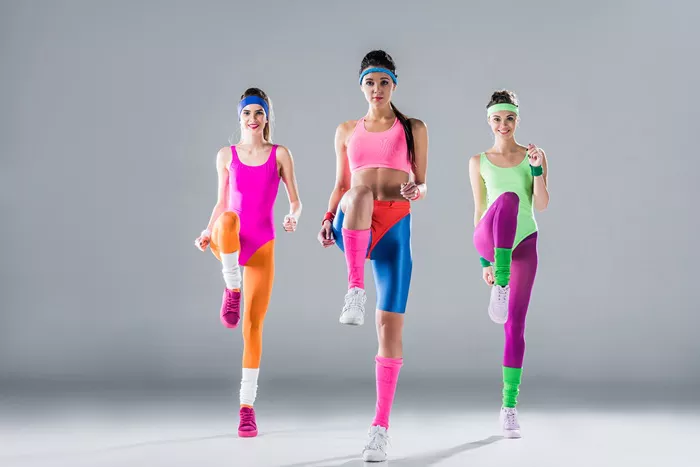In the 1980s, step aerobics dominated home workouts. While many focused on weightlifting at the gym, step aerobics was the popular way to “get your steps in.” Although its popularity declined in the early 2000s, step aerobics set the stage for modern group fitness classes. Its impact can still be seen today in workouts like HIIT and dance cardio.
Phillip Solomon, a NASM-certified trainer and coach at Barry’s Bootcamp, explains, “Step aerobics gave us rhythm and music-based workouts. It built the foundation for today’s group fitness and helped people reach their true potential.” He adds, “Beyond the leg warmers and synth music, step aerobics created the basic structure for what we now call high-intensity interval training, or HIIT.”
Step Aerobics Compared to Modern HIIT
Anyone who has taken or taught a workout class knows the focus is on rhythm, pacing, and combining cardio with strength. Solomon notes that major fitness brands like Barry’s, SoulCycle, Orangetheory, and F45 owe much to the group fitness craze of the 1980s.
HIIT Is More Flexible: Solomon says, “HIIT is often based on how many repetitions you do within a set time. This is different from step aerobics, where you move continuously until the music ends.”
Step Aerobics Used Minimal Equipment: The main tool was a raised platform, without additional weights. Modern HIIT uses dumbbells, kettlebells, resistance bands, and more.
Step Aerobics Demanded Constant High Energy: Solomon describes it as “keeping a steady high energy level, about 7 or 8 out of 10, for a full hour.” Today’s HIIT workouts vary intensity, reaching peaks of 9 or 10 for short bursts with rest periods in between.
Different Goals: “HIIT raises and lowers your heart rate in bursts,” Solomon says. “This trains both aerobic and anaerobic systems and helps the heart recover faster.” Both step aerobics and HIIT improve cardiovascular health but in different ways.
The Lasting Impact of Step Aerobics on HIIT
Step aerobics may seem old-fashioned today, but it was critical in shaping HIIT workouts. It featured fast-paced, full-body moves that challenged both body and mind. These sessions burned calories and made people sweat, all within an hour.
Most importantly, Solomon says, step aerobics brought fun back to exercise. “Working out to your favorite songs, feeling the energy of the instructor, or sharing that excitement with a friend — that was what changed fitness for good.”

